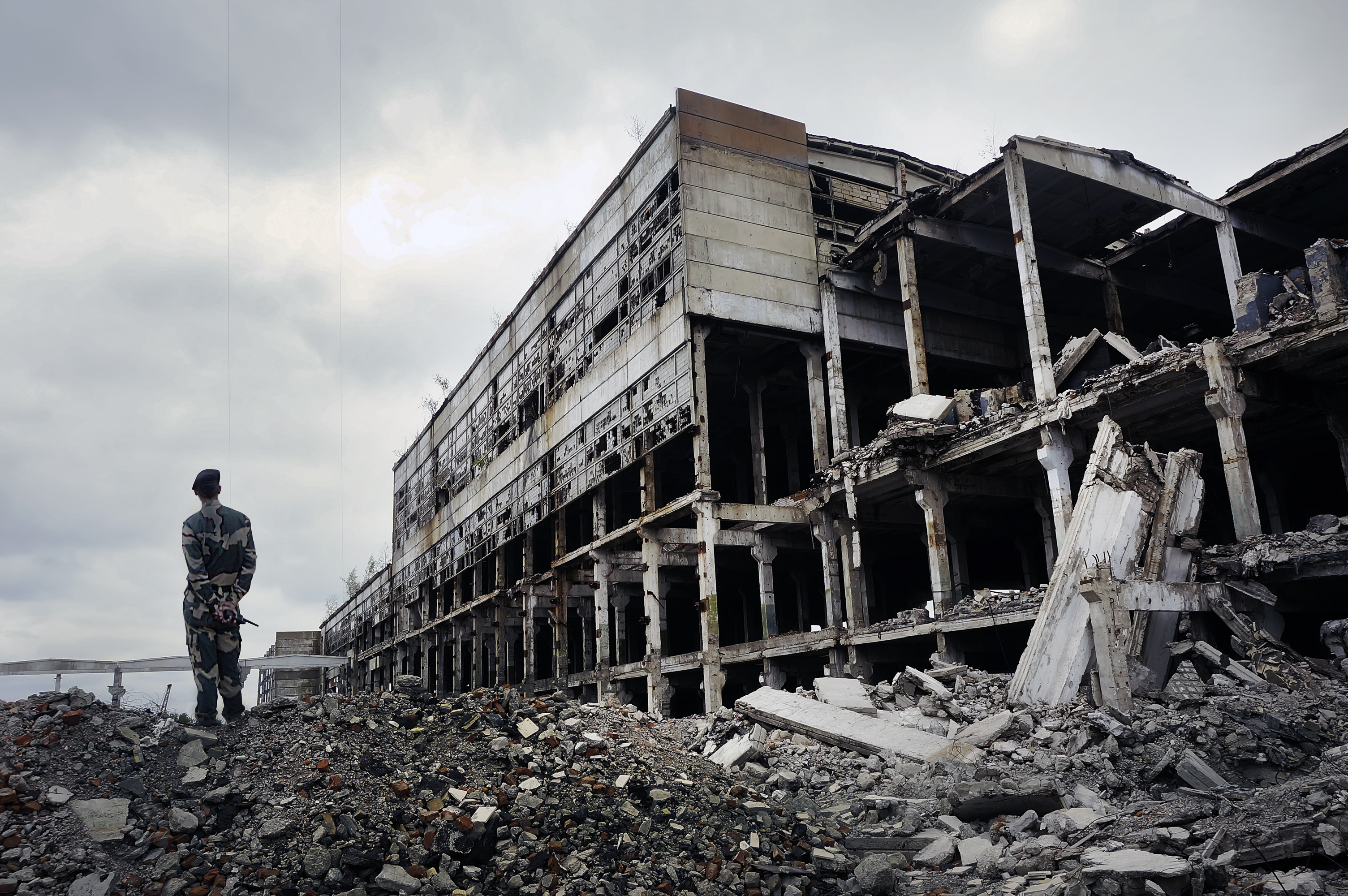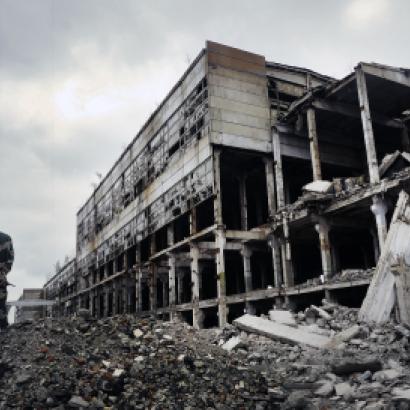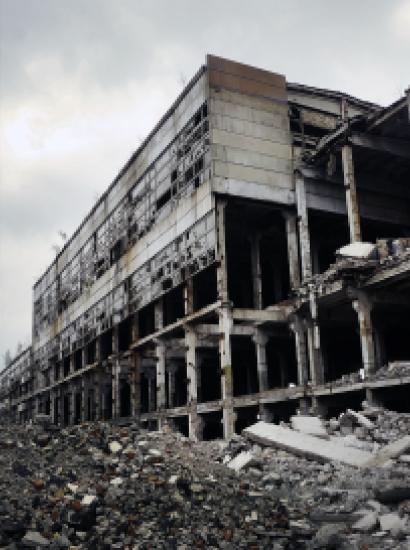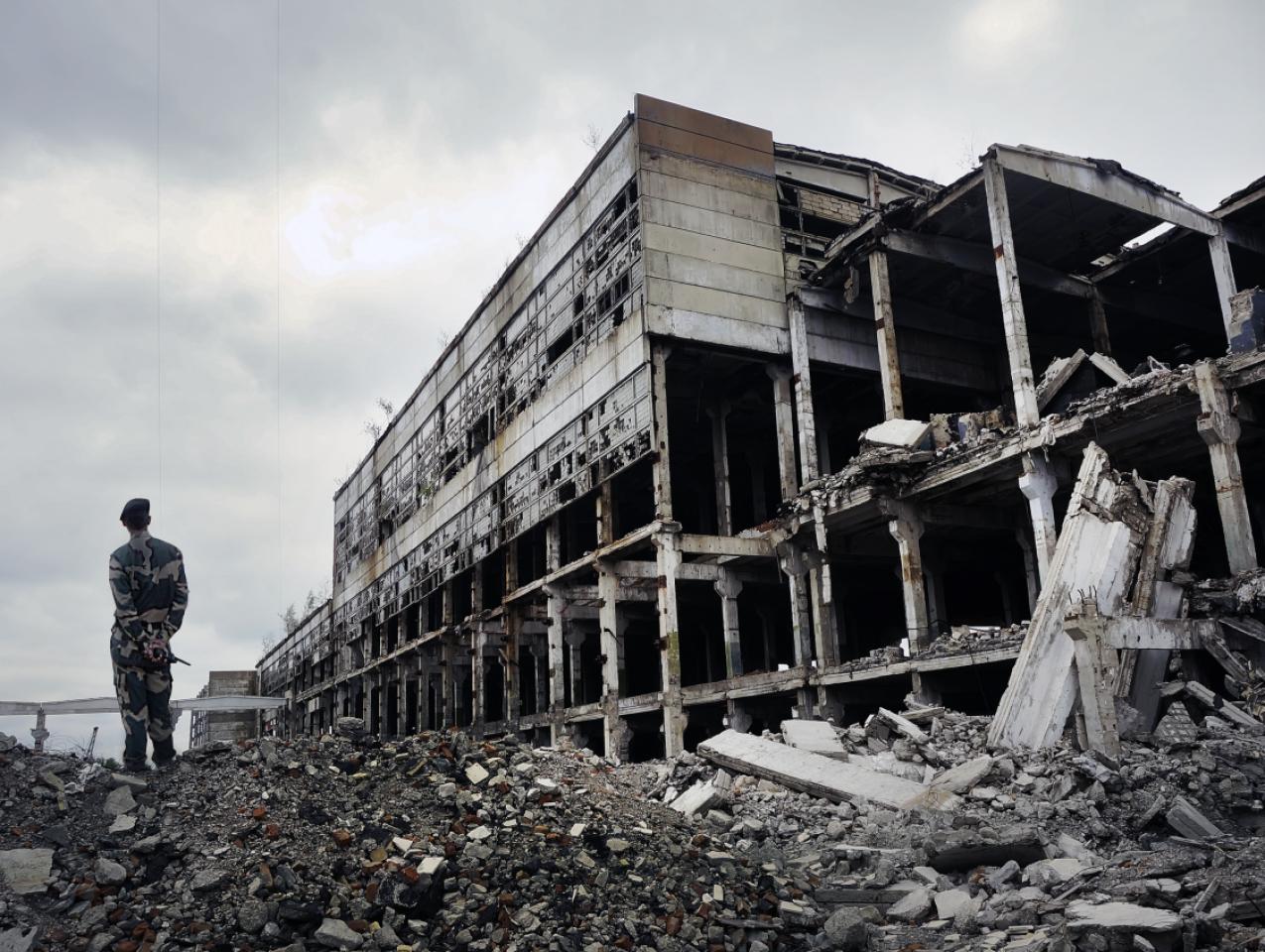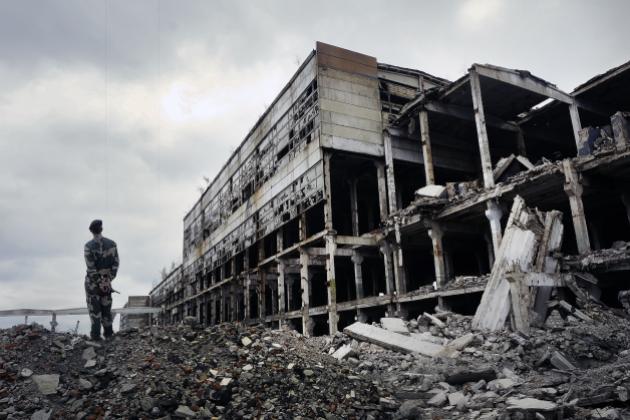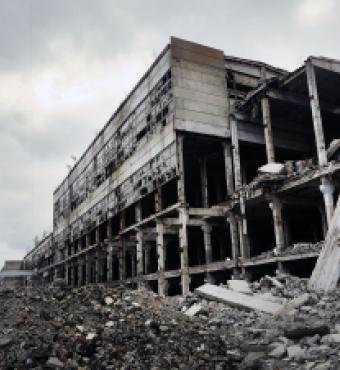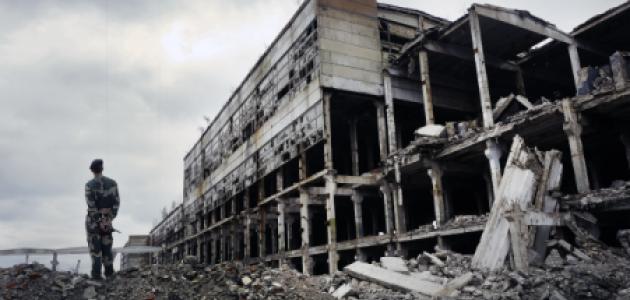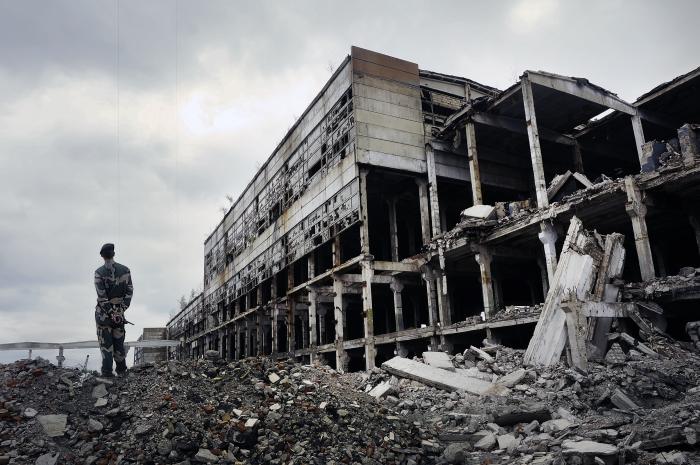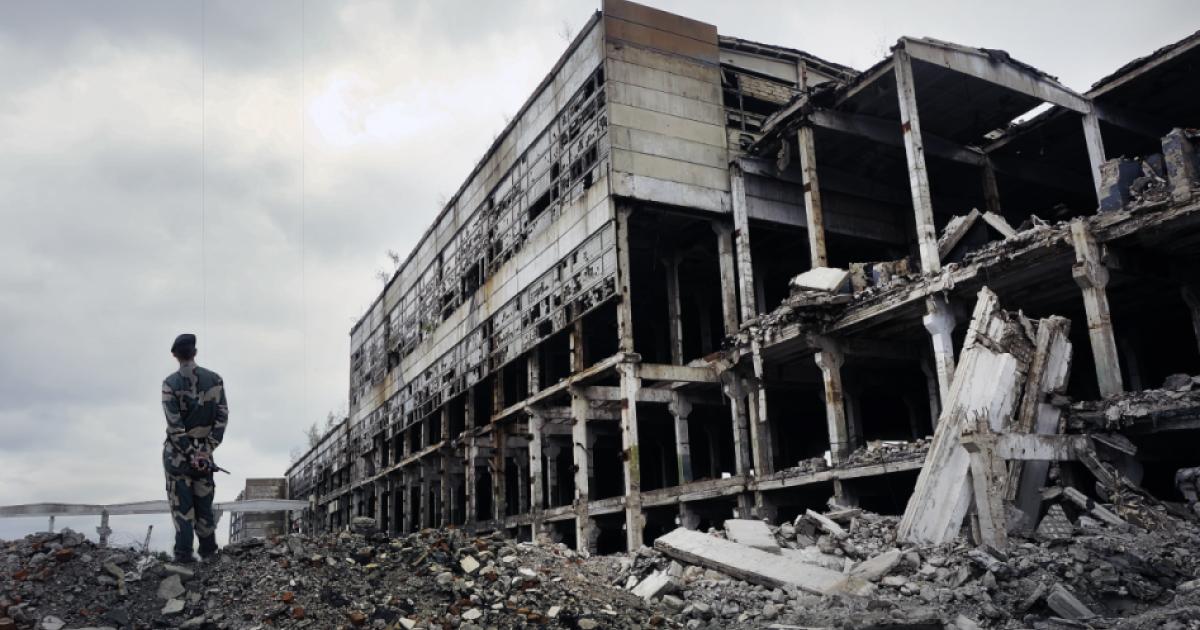The 24-hour news cycle has offered a sequential, fragmented vision of the Syrian conflict. A chemical attack here, a temporary cease fire there; a wave of hopeless refugees, a gruesome terrorist attack; the fall of a besieged city, yet another round of negotiations. Caught in the fractional details, few looked at the bigger picture of how the position of influence the US had secured in the Middle East from the mid-1970s unraveled. As Washington stood by, the Syrian war somehow ushered Russia back into the region, shattered the stability of the European Union, terminally fractured Yemen, solidified Iran’s land bridge to the Mediterranean, and accelerated Turkey’s transition into yet another rogue autocracy.
This new Middle East is Obama’s child, who disowned Syria the same way Bush had claimed Iraq, although arguably history would have flowed toward the same outcome whatever the decisions of those men. Many may feel the 2003 invasion of Iraq was a colossal mistake that unleashed chaos, but had the cruel Ba’athist regime endured through the 2000s, it would have been caught like the other Arab states in the hope and fury that followed the Tunisian revolution. Iraq’s Arab Spring would have ushered in another conflagration, for sure a different one, but tragedies and commotion always were in that country’s future.
The United States struggled in Iraq, and lost, one IED at a time, the aura of hegemonic invincibility it had acquired at the turn of the 1990s, when the Soviet Union was chased from Afghanistan by American proxies, and Iraq was swatted out of Kuwait by American tanks. This tactical ease was only a memory by 2004, when Anbar and Nineveh and Salah al-Din became killing grounds. And yet, a combination of vulnerability and tenacity somehow grounded America’s presence in the region. A generation of American officers had become abna al-balad, sons-of-the-land; they spoke local languages, sometimes decently, and had acquired a genuine if critical understanding and appreciation of local cultures. America was another dog in the pit; simultaneously sought after and rejected, alien yet familiar, it belonged. That’s what made America’s no-show in Syria so unnerving. It was forfeit, desertion almost.
Obama had his sights on a nuclear deal with Iran, and while he negotiated with Tehran’s power brokers the rot of civil war spread across North Africa, the Levant, Mesopotamia, Arabia. Bush’s America had brought violence to Iraq, but also aid and medicine and commerce (or at least piles of cash). Obama’s drone-only policy exposed an America that was cowardly and self-centered: Arab children were gassed or starved or shelled with impunity while US missiles launched from afar were reserved for terrorists (and their hapless collaterals). To protect civilians, America had reluctantly led from behind in Libya, a beguiling doctrine, but then it took a pass on Syria. The enormity of the crimes committed absolved from responsibility, confirming the adage that if one murder is a tragedy, millions is a statistic.
A new Administration came to this wasteland intending to regain the lost ground. Assertive messaging harked back to a time when America was dominant, but concessions were made all around to repair frayed alliances, and rolling back rivals was an uphill struggle. Washington made amends with Tel Aviv—or is it Jerusalem now?—and echoed the delusions of previous American Presidents that it was in their reach to deliver peace between Israel and the Palestinians. It ‘refriended’ Riyadh, even though the revisionist agenda of its newly anointed crown prince was well outside America’s comfort zone, and the Saudi-led war in Yemen was a fiasco of Syrian proportions. It had harsh words for Tehran, yet little action to back them up. It inherited the robust and pragmatic relationship with the Kurds, but stood by when Iraqi and Turkish troops crushed them. And it has been as meek as ever when faced with the thuggery of the regimes in Ankara and Moscow.
The ghosts of Al Qaeda have been the West’s Moby Dick, the shadow that allowed the prey to draw circles around the hunter. This blindness started with the attacks of 9/11, which shaped perceptions and priorities for a generation. Soon after, the ruthless killings of Shia civilians by an early incarnation of Daesh, the Islamic State, derailed the American plan for post-Saddam Iraq and killed hopes of a better, less brutal Middle East. During Obama’s tenure, gory performances of crowd murder—bombs and shooting sprees and rampaging trucks all across Europe—reinforced the understandable if misguided obsession with Islamists. Reflexively, American forces found themselves fighting with Russia and Turkey on the side of Iran and its protégés, Abadi in Iraq and Asad in Syria. By selling itself as a global threat, Daesh had set the course for its own destruction, but it had provided the distraction for Syria’s autocrat to claw his way back from the brink.
Now, seven years in, the Syrian war is reaching a new paroxysm of violence. As an end feels near, the victors seek to consolidate their position. Ankara is pressed to cut down in size Kurdish centers of power. Tel Aviv, discrete until now, is signaling its red lines with force. And a resurgent Damascus continues to depopulate urban areas where the rebellion had taken roots, a massive cleansing aimed at a territorial demographic distribution manageable over the long-term. To justify its toleration of murder, Washington reminds itself that the killers have paid lip service to the struggle against Daesh. But within the disintegrating rebellion, distinctions between Islamists and non-Islamists have lost all meaning, factionalism being driven by personal rivalries and opportunistic alignments with competing foreign patrons. Syria is a game of power, not ideology, and if Washington prefers to ignore this reality it is because this is a game it is losing. Portraying the Syrian civil war as a counterterrorism operation against lunatics obfuscates the dramatic shifts in regional and global influence that have come to pass.
America’s losses in terms of reach are made up for by gains in degrees of freedom. After years of upheaval, there is no status quo to defend; after years ignoring humanitarian calls, there are no moral principles to uphold—no one would blink if Washington pursued hard and dirty realism. Politically, the only imperative is to keep oil flowing (for now) and avert a terrorist attack on American soil. Beyond that, the US has options, with the caveat that there are no right policies for the Middle East, only trade-offs and Faustian pacts.
The US had been a quasi-hegemonic caretaker for the region since the 1970s, and it must first decide whether it is desirable to restore and then maintain such a position in a global energy landscape that will be less dependent on fossil fuels. China and the EU are the region’s main trading partners, but it is American forces that are positioned year round from Kuwait to Djibouti. America is still the peacemaker by default, when all interregional conflicts crystalize around Iran, more specifically around Iran’s enmity with Israel on one hand, and Saudi on the other. Leaving Islamists aside—and they should be left aside, because they are derivative to the ailments that afflict the states, not causal to the states’ failures—that makes the relationship between Washington and Tehran the pivotal variable of the regional equation.
A radical diplomatic approach would resurrect the Kissinger-era primary alliance with governments in Jerusalem, Riyadh, and Tehran, thereby marginalizing Russia and Turkey. Washington probably still has enough financial and political leverage to get buy-in from Israel and Saudi Arabia if it pushed the issue. To court Iran, it could put on the table a removal of all remaining sanctions, and acquiescence to the fait accompli of Tehran’s extension to the Mediterranean. Iran’s Revolutionary Guards Corps will be institutionally and existentially, if not ideologically, reticent, because its raison d’être is to protect the revolution from America’s evil designs. Already unpopular, the Corps may not survive a genuine rapprochement with Washington. To overcome this opposition, the US would be inspired to craft a central role for the Corps in this new order, using some form of military assistance to reorient its priorities toward what have been historically and strategically Iran’s natural rivals, and are not America’s friends: Turkey, Russia, and the Af/Pak region, home to Pashtuns and Baluchis.
If not diplomacy, a bold military approach would use the Syrian battleground to bleed America’s rivals. Russia has no real strategic interest in Syria: this war is a vanity vehicle for Putin, bringing in at best tangential leverage in the Crimean/Ukrainian affair. So far, Russia has had it easy, but if the cost increased to the point of undermining its primary objectives at home and in Central Europe, it could cut its support with little loss. Many would shudder at the idea of rebels, including Islamists (for they have been the most tenacious fighters), shooting Russian aircrafts with American-provided ground-air weapons systems, but control of the skies is key to control of the region. With Russia gone, Tehran would have to foot the bill alone, with limited air power. The recent wave of protests across Iran shows that domestic support for the Syrian campaign is lacking, and an escalation could place the Corps in a precarious position. The Iranian regime thrives in a soft spot of tension with America, but in its current form it may survive neither a genuine rapprochement, nor an open conflict, with the US.
Against those scenarios there is the path of least resistance, the safer course, the current course: neither acquiescing to the new distribution of forces in the region, nor doing anything sufficient to reverse it. Living with the delusion that America is in control because it says it is, and dismissing the repeated violations of the American order as temporary glitches that can be fixed through the theater of international negotiations and UN resolutions. Even if satisfactory in the short-term, bad diplomatic fixes poison the future. Precedents from Northern Ireland, Palestine, Taiwan, North Korea, northern Cyprus or the Western Sahara show how transitional solutions become permanent limbos and feed conflicts for generations. The order of Sykes-Picot, which carved Mesopotamia at the end of WWI, is no more. It is better to write off the loss and look creatively and boldly at the future, than to pretend fixing notional countries like Iraq or Syria.







